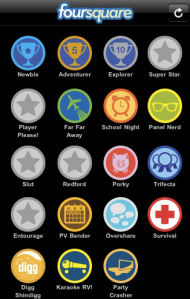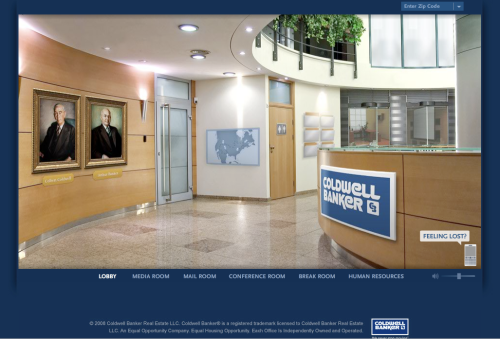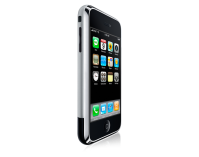By: Tim Baker
Apple finally launched their much-hyped App Store for Mac today and in one system update instantly revolutionized the software industry forever.
For anyone that doubts that the Mac App Store is a game changer, I implore you to look at the success of the App store on iOS. Developers of all makes and sizes have found a viable way to distribute software and compete against the industry behemoths on an almost-level playing field. (I say “almost” because the Electronic Arts of the world have the money to clout to feature their big name apps on the storefront when launched or discounted.)
When the App store first made it’s debut on the iPhone & iPod Touch, it was a goldmine for developers – many of them earning small fortunes on the success of their apps with relatively limited competition. Fast-forward to 2011 and the App Store is overcrowded with software of all types and quality; it’s a lot harder for new apps to stand out from all the noise. Still, an entire community of bloggers and other taste makers have made it their goal to find and share new, quality apps with interested readers and with the right amount of promotion, these innovative apps are being consumed by the masses.
When the iPad launched last year, the second gold rush occurred with developers racing to market with iPad-optimized apps, although this time, many wanted to earn more than they were on the iPhone and charged an “iPad premium.” An iPhone app priced at 99¢ would have it’s “HD” iPad-optimized counterpart priced much higher, say $4.99. There was a big backlash by bloggers against this practice with many feeling they were being ripped off; while the practice still goes on today, I personally see it much less, and the price differential between iPhone and iPad app is usually not as enormous a gap.
The Mac App Store will be no different with developers rushing to get their software into this store while the competition relatively low. Today’s launch includes 1,000 apps and will continue to grow every day. That being said, there is a huge difference between the App store on Mac versus the mobile store – one doesn’t have to use the App store to get new software on their machine. On Apple’s mobile devices, unless you jailbreak, the only way to put applications on is through the App store or a closed corporate environment. Mobile developers need to be in the App Store; Mac OS X developers currently don’t.
The reason the Mac App Store changes everything is simple – it’s the best way for developers to monetize their software. Right now, a small developer makes an app, creates a website about it, maybe puts out a press release and hopes for the best. Many of these developers are making little-to-no money off of their apps, causing them to treat it more as a hobby than a job. Too often, great apps fall by the wayside on Mac when developers don’t have time to update or improve them causing a no-win situation for themselves or the user. Having one centralized place to sell their app, push out updates and make money is going to lead to more quality apps and better prices for users. As the App Store on Mac matures and grows, it’s not outside the realm of possibility to see it being the only approved way to put new software on one’s machine in the future. Many people are very weary of installing software they find on random websites out of fear of spyware or viruses, so the comfort in knowing that these applications from the Mac App Store are safe will be one of the primary drivers in its success.
The mobile App Store has shown that people will pay for software when they feel it’s priced right. The immense competition has made it pretty much de facto that apps that charge use a 99¢ price point. (Obviously this isn’t the case for all apps, but for the vast majority.) One of my favorite authors, Dan Ariely, writes in his book Predictably Irrational that people’s purchasing habits are conditioned. Kids who grew up in the 90’s and stole all their music off Napster and LimeWire don’t feel like they were committing a crime – they just view music as something that should be free. Breaking this conditioned habit is such a hard task which is why it’s a lot tougher to get people in their teens and early 20’s to buy music than it is for the older population that paid for music their entire life. This younger demographic tends to think that anything over 99¢ is too much for a song, yet spending $4.00 on a coffee is perfectly acceptable. The exact opposite is true for those that grew up never paying more than 75¢ for their coffee. This same philosophy is occuring with the App Store; people are conditioned to pay for quality software, but only at very low prices.
Currently, some of the software prices in the Mac store are very high. Pixelmator, a very worthy Photoshop competitor, is priced at $29.99. I’ve used this program and can say that it’s wonderful. When I saw it priced at around that point on it’s website last year, it seemed like a great deal, but in the App Store setting, it sticks out like a sore thumb. I could be wrong, but I expect Pixelmator to be $9.99 in the App Store by the end of the year. If history is going to repeat itself, these high price points are going to have to come down for the desktop App Store if people are going to buy them en masse. $9.99 seems like a fair price point to me.
There’s no doubt there will be a lot of growing pains from developers who don’t want to be a part of Apple’s walled garden App Store, but at the end of the day, they will have to go where the money is, even if it means they have to lower prices and give up some control.
 Of all the location-aware mobile applications,
Of all the location-aware mobile applications, 





 The
The 




